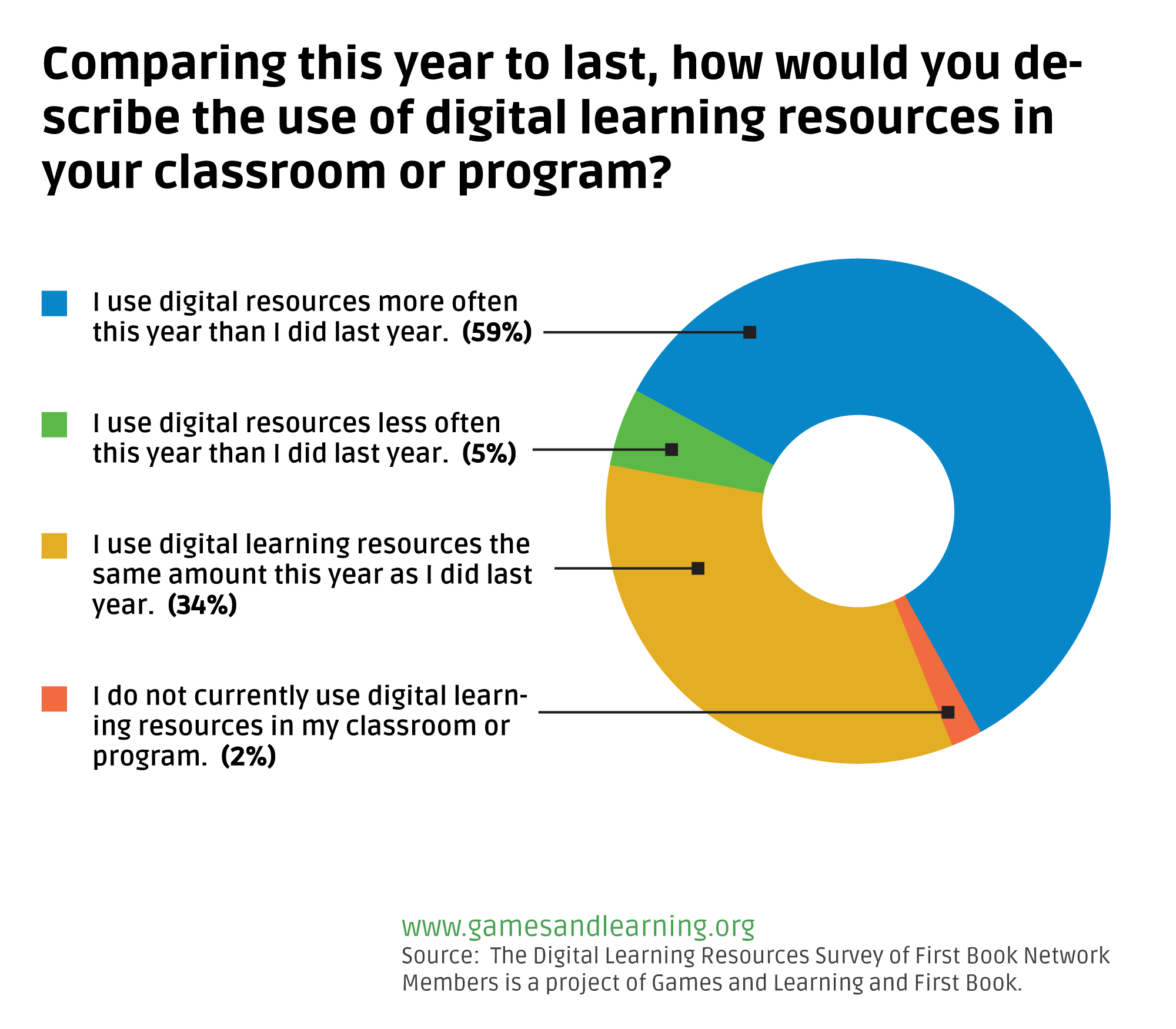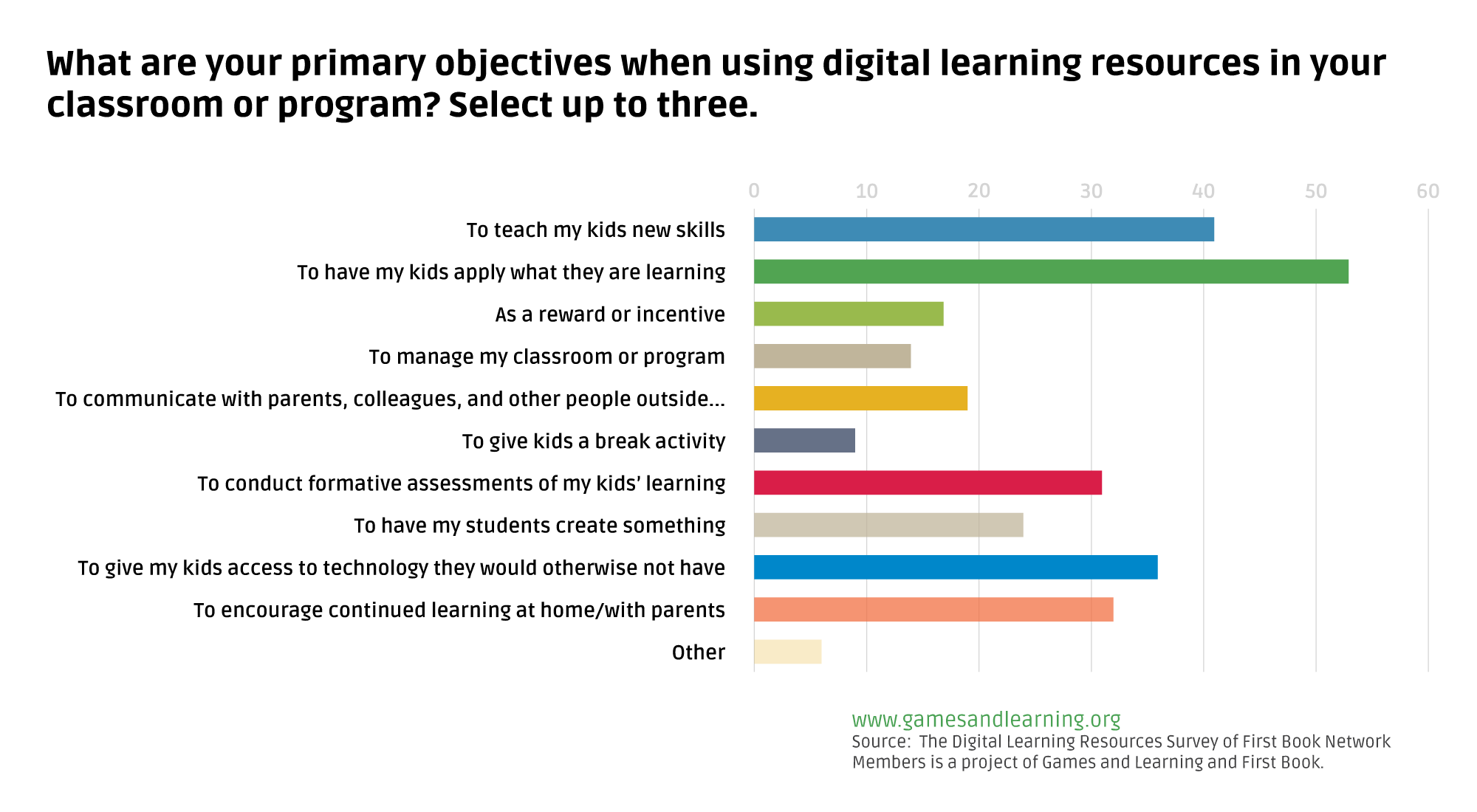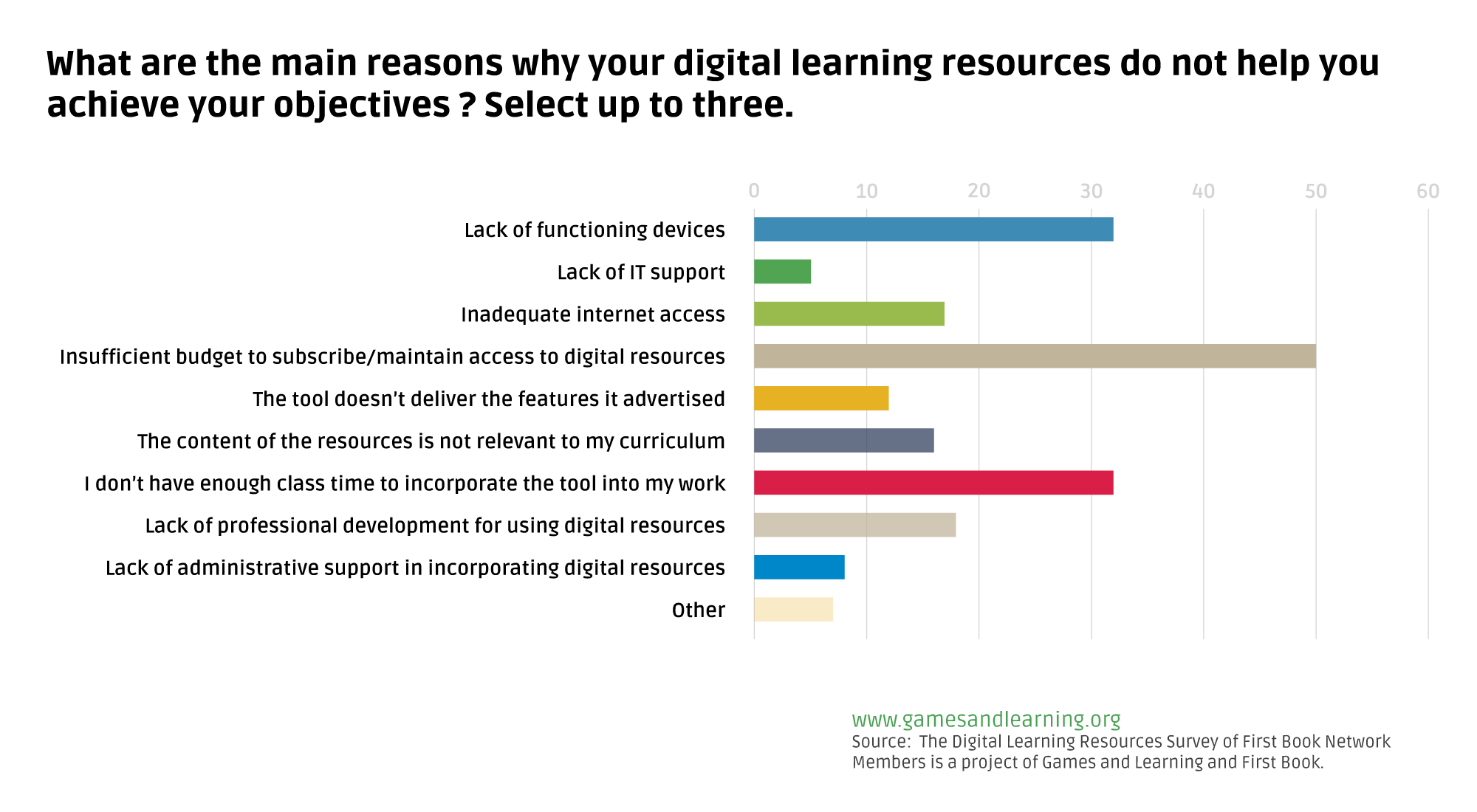
As developers continue to launch new games and other digital learning tools one of the biggest markets and unanswered questions has remained how do teachers really use these assets in the classroom. A new survey of teachers and after-school program instructors offers some interesting insights.
A survey conducted by FirstBook, the nonprofit that works with underserved and other communities, and Games and Learning asked teachers who use digital tools what they use and how they utilize them.
The survey, conducted earlier this month, found more than half (52%) used digital learning tools every day. All told nearly 80% use the games, apps and ebooks several times a week or more.
As you can see, the usage of these tools is increasing in most classrooms, as teachers find new apps and ways to use them.It is notable how much this marks an increase from earlier large-scale surveys. Three years ago, we did a similar survey of educators and found that only 16% of teachers reported using digital tools daily and another 27% used them multiple times a week.
Back in 2016, we reported:
Even considering those challenges, it is still striking that 50% of out-of-school instructors and a quarter of the teachers report that they never use digital games.
Perhaps most intriguing is that most of these same respondents report playing digital games on their own smartphones, computers or consoles. These are, for the most part, gamers who don’t lack experience with digital games.
Now, it would seem that attitude has shifted.
But that is not the only thing we noted in these latest responses. What they used digital tools for also seems to be changing.
Earlier surveys of educators found many focused on the fact that students loved to play games and therefore they used them as either a reward for completing an assignment or something to do between actual class work.
Increasingly, we have heard that teachers instead view these tools as part of class, not an addition to it.
Several teachers commented that these tools were great from breaking the ice on a new topic, one saying, they are “ideal for introducing a new subject to a group of students.”
This idea was echoed in another survey response that found that 83% of respondents said that the digital tools always (11%) or most of the time (72%) help teachers achieve their primary educational objective.
It seems teachers are moving from using games as an add-on to making them a core part of the educational experience.
But problems, of course, remain.
The First Book audience, composed of educators, program leaders, and caregivers serving children in need, has before noted that money and support remain stumbling blocks to wider adoption of technology.
The survey respondents appeared to have more autonomy to make digital tool selection than in the past, but also noted they do not have enough funding from either grants or the school to choose all they would want.
Last year, a similar survey highlighted the difficulty of building a one-size-fits-all model of purchasing. At that time we found:
Licenses may work better for educators like this school librarian: “I sometimes find using digital resources difficult because as a librarian I work with the whole school. A subscription might only include 30 accounts. I like to introduce kids to things in the library and then pass that on as a resource to teachers. Limited accounts makes this hard to do.”
However, educators also cite drawbacks with subscription models: “Our school is small and rural. We cannot afford flat licensing fees because we have a small student population with most living in poverty.” Some also see subscription costs as money they cannot afford to spend: “Price is very important to us especially subscription costs. As a high minority (90% Hispanic) school and a school with 92% or our students in poverty we have a very limited budget that is shrinking and we need to stretch our dollars as much as we can.”
This year, we heard similar issues with half of respondents worrying about cost.
But is it not just the bottom line, time and training also came up as barriers to adoption. One educator noted, “Lack of planning time to become adequately prepared to present new technologies and how students can use them” were what held them back and they were not alone.
This quick snapshot is not as exhaustive as some of our previous surveys, but it does highlight the increasing opportunity for games and digital tools to move from the fringe of the classroom experience to the core, but that training, time and cost remain some of the issues that must be addressed.
Methodology
This survey was designed by First Book and Games and Learning and was fielded during a 1-week period in June 2019. The survey was sent out to First Book member educators . Some 100 First Book members responded.

























